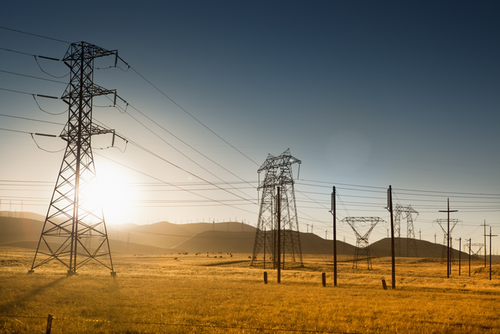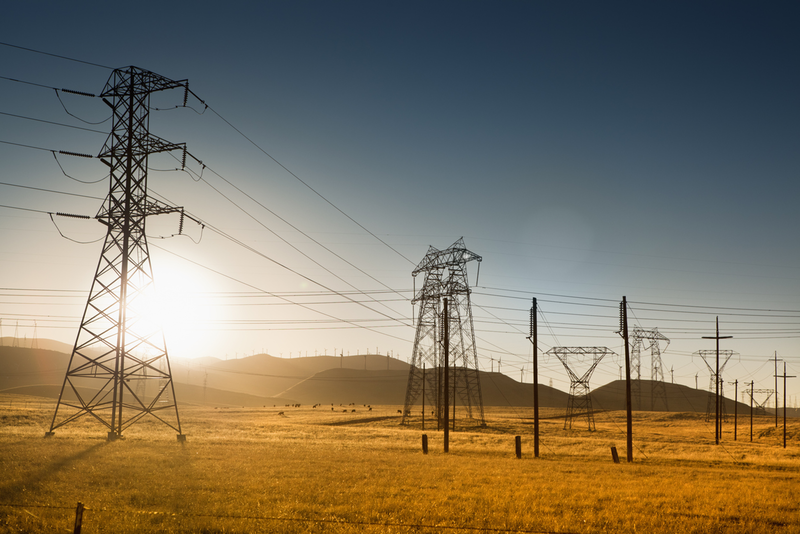Grid Outages from Failures of Power Line Clusters
In systems such as electrical power grids or airline transportation networks, the failure of one element can put extra stress on others, causing cascades of further failure that result in vast power outages or webs of air traffic delays. Using data from the Texas electrical grid, a research team has now demonstrated that such catastrophic failures can be modeled using a simpler network made up of groups of components that commonly fail together in the same event. The team has also provided an efficient algorithm for identifying these key groups, which could improve engineers’ ability to protect real-world networked systems against cascading breakdowns.
Engineers routinely design power grids and similar distributed networks so that they keep working if a small number of elements fail, but larger and less frequent cascades—"chain reaction" events that take down much of the network—present major problems. Currently, little is known about how cascades unfold, such as whether they often follow similar pathways. Takashi Nishikawa and his colleagues at Northwestern University in Evanston, Illinois, have now established, in the context of an electrical power grid, that large cascades occur through the correlated failure of clusters of individual elements.
The researchers' analysis of failure data in power grids indicated that transmission lines don't fail at random, independently of one another. Rather, they found that there exist important subsets of the network that, in larger cascades, frequently fail together. Often pairs of such "co-susceptible" components aren't even in contact, but the failure of one power line causes electricity to be re-routed and to overload a power line located far away.
Identifying the most significant groups of co-susceptible elements, the team believed, might offer insight into common mechanisms by which large cascades take place. However, it is computationally demanding to identify such groups in large data sets of past grid failures. So the researchers devised an efficient algorithm that identifies these clusters.
The team demonstrated the new technique using three years of data on power supply, power demand, and transmission line capacities for the electrical grid in Texas. They first computed the distribution of cascade sizes from a high-level simulation model known to accurately mimic the network's historical pattern of cascade sizes. They seeded 5,000 cascades, initiating each by knocking out a few elements, and then they simulated the follow-on effects. They then used their algorithm on these cascade data to identify the key co-susceptible clusters, many of which involved more than 6 individual power lines.
Having identified these clusters, Nishikawa and colleagues could then view cascades as occurring not in the original physical network, but in an abstract and simpler network made of the co-susceptible groups. Using this network to calculate the full distribution of cascades by size, the team found results virtually identical to those achieved using the full simulation model. The agreement demonstrates that the true cascade dynamics of the network depend almost entirely on the evolution of a simpler skeleton of key co-susceptible groups.
“I am enthusiastic that the paper reproduces the distribution of cascade size by identifying the groups of co-susceptible lines directly from cascading data,” says Ian Dobson, an electrical engineering professor at Iowa State University in Ames. “The method for identifying the groups of lines could be of interest to power system engineers.”
Team member Adilson Motter suggests that this new method could also be used to estimate the probabilities of the worst cascades. "For example, you can ask, 'How likely would it be to have a cascade of size twice as large as the largest ever observed?'" he says. “Our approach allows computation of the tail of the cascade size distribution, beyond what is possible from historical data." And of course, as Motter says, "the largest cascades are the ones that matter the most."
This research is published in Physical Review Letters.
–Mark Buchanan
Mark Buchanan is a freelance science writer who splits his time between Abergavenny, UK, and Notre Dame de Courson, France.





